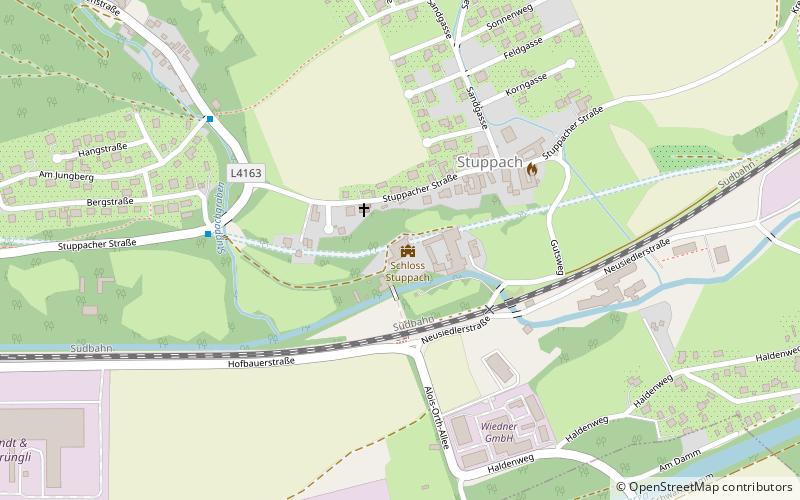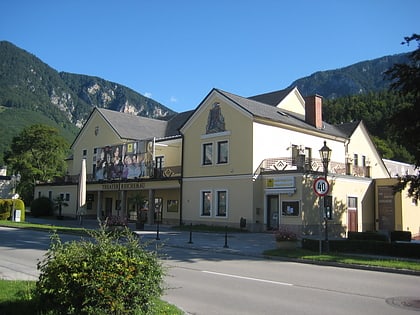Schloss Stuppach


Facts and practical information
Stuppach Castle is the ancestral castle of the Counts of Wurmbrand-Stuppach. It is located in the town of Gloggnitz, cadastral municipality of Stuppach, in Lower Austria at the foot of the Semmering.
The first mention of it was in 1130. The three-story building extends from SW to NE and belongs to different building periods. The northern part from the entrance with the 18 m high, round corner tower with keyholes forms the medieval core, the western part including the chapel is from the Renaissance period and the southern part is from the Baroque period. Insertions and additions were made in later times. The building contained about 50 rooms, among which were two halls. The 36 rooms were well equipped.
From 1763 to 1827, Count Franz von Walsegg lived at Stuppach Castle, and in 1791 he commissioned Wolfgang Amadeus Mozart to compose a requiem for his deceased wife. The result was the Mozart Requiem, one of Mozart's best known and most popular works. The original score was kept at Stuppach Castle until shortly after Count Walsegg's death. Today, the original score can be admired in the Austrian National Library. It is considered the most valuable exhibit in the music collection.
In 1936, the castle began to deteriorate: in 1938, it housed the Gauführerschule of the SA. During the invasion of the Soviet Army in 1945, the castle was to be blown up, which the assigned SS man refrained from doing, as the village above would probably have been partially affected. While trying to burn documents, they were surprised by the Soviet soldiers. After that the Soviet field bakery was located here, they simply stuck the stove pipe out the window. In 1946 they overheated the stove, which started a fire and destroyed most of the southern roof truss, leaving the castle largely in ruins. The firemen were sent home with the words "Castle no matter better men healthy!". Later, the castle was requisitioned by the municipality due to outstanding taxes and until the revitalization mentioned below, social housing was located in the still largely preserved northern wing. The chapel on the west side of the castle was used for special church services long after the church was built in the immediate vicinity; it had a so-called "emergency roof". The otherwise missing roof caused the structural decay, the walls load-bearing, but stepping on the dippel tree ceilings life-threatening. The revitalization destroyed the preserved curved baroque double staircase and changed the south front with a neo-historic terrace, staircase, and roof extension.
The castle and estate have been separated since the forced auction in 1937 and have different owners. Today's castle includes the revitalized and largely restored main building with about 2400 m² and a detached west wing, whose restoration is still pending.
Revitalization of the main building began in the late 1980s. In 1997, this was the location for the benefit event and world premiere of the play Mozart's Requiem - Spiel um die Entstehungsgeschichte. Since that time, Stuppach Castle has also been known as "Mozart's Last Castle". The term was coined on the part of Austrian television on the occasion of a recording of parts of the event.
Since its revitalization, Stuppach Castle has increasingly developed into a location for art and culture. Regular events - especially salon concerts - are held with internationally successful artists or performers.
Currently, work is underway on the realization of a major project: The story around "Mozart's last castle".
Lower Austria
Schloss Stuppach – popular in the area (distance from the attraction)
Nearby attractions include: Hermannshöhle, Schloss Gloggnitz, Historic Post Office, Christkönigskirche.











